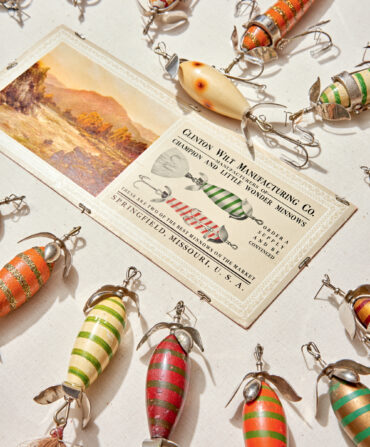Outside of Glasgow, Scotland, the gun maker David McKay Brown and his team of four craftsmen use files and chisels and hundreds of hours of handwork to build some of the world’s most distinctive upland doubles.
The Scottish round action is McKay Brown’s signature gun, a side-by-side developed in Edinburgh in the 1880s that carries and comes to the shoulder with all the grace its sleek and slender lines imply. It’s an elegant, iconic design coveted by wing shooters worldwide. And for William Palmer, the CEO of Tall Timbers Research Station & Land Conservancy as well as a game-bird biologist and avid quail hunter, it seemed the perfect carriage for a one-of-a-kind gun.
“This might be the finest gun for shooting quail ever made,” Palmer says of the Longleaf Gun, a 28-gauge McKay Brown that he commissioned for Tall Timbers’ fall fund-raising auction this past September. “But its real target is the conservation of the South’s longleaf ecosystem and wild bobwhites.”
Tall Timbers was cofounded in 1958 by Herbert Stoddard, a visionary naturalist who recognized that fire in the South’s piney woods was critical to the health of longleaf and bobwhites alike. Sited on a former quail plantation north of Tallahassee, Florida, the organization has become the epicenter for the science of fire ecology—as well as a proving ground for cutting-edge quail-management techniques. Thanks to those methods, wild bobwhite populations on plantations in the surrounding Red Hills Region have today reached all-time highs, and the area’s expansive longleaf tracts are among the nation’s healthiest.

David McKay Brown
The underside of the action.
As a passionate hunter of Scotland’s red grouse—another species, like bobwhite, that prospers from fire—McKay Brown felt deeply sympathetic to the cause. The Longleaf Gun would be a small-bore, of course, because that’s what gentlemen and gentlewomen in the South use to shoot at Gentleman Bob, and a trim little 28-gauge with 29-inch barrels can do almost all a 20 can at the ranges typical for quail. “For the experienced shot,” McKay Brown says, “the 28 is a very potent tool.”
But building it would take an international effort. McKay Brown enlisted Mirko Agnellini, a talented young engraver in northern Italy’s Gardone Val Trompia, a little town famed for making arms since Roman times. Palmer picked the American artist C. D. Clarke—whose plein air works are well known among sporting-art enthusiasts—to paint a still life of quail in watercolor for Agnellini to reproduce as a game scene on the underside of the action, as well as to draw a cone-and-needle composition that would serve as a template for decorating the action’s ball-like fences.

Sporting Art
C.D. Clarke’s original still life.
Trained at Gardone’s renowned Creative Art studio, Agnellini engraved the game scene—framed by a bed of lush scroll and barely as big as a nickel—in the ethereal style Italians call bulino, so named for the needle-sharp handheld tool he used to cut thousands of microscopic lines and dots into his canvas of steel. The variegated texture of the cones called for carving in deep relief, and with hammer and chisel Agnellini sculpted them so true to life that you can almost smell the sap.
“I wanted the Longleaf Gun to celebrate the crucial role quail hunters have had in restoring fire to the landscape in the South,” Palmer says. When the completed gun finally went on the block in September, a Tall Timbers supporter and plantation owner proved that very point, placing a winning bid of $50,000 for the gun—and Clarke’s accompanying painting—and helping Tall Timbers raise a record-setting $201,000. Not a bad bag for a small-bore bird gun.








